City of Varazdin Gets Croatia's First Community Orchard
October 27, 2020 – The City of Varazdin is planting Croatia's first community orchard – the space will bring together residents of all ages, provide free fruits and play a role in educating about organic produce and cultivation
The first community orchard in this part of Europe is being built in Varazdin. The community orchard will be situated to the west of the city centre, in the Haller alley, just behind the city cemetery. In the first phase, some 250 trees will be planted and be accessible to the public.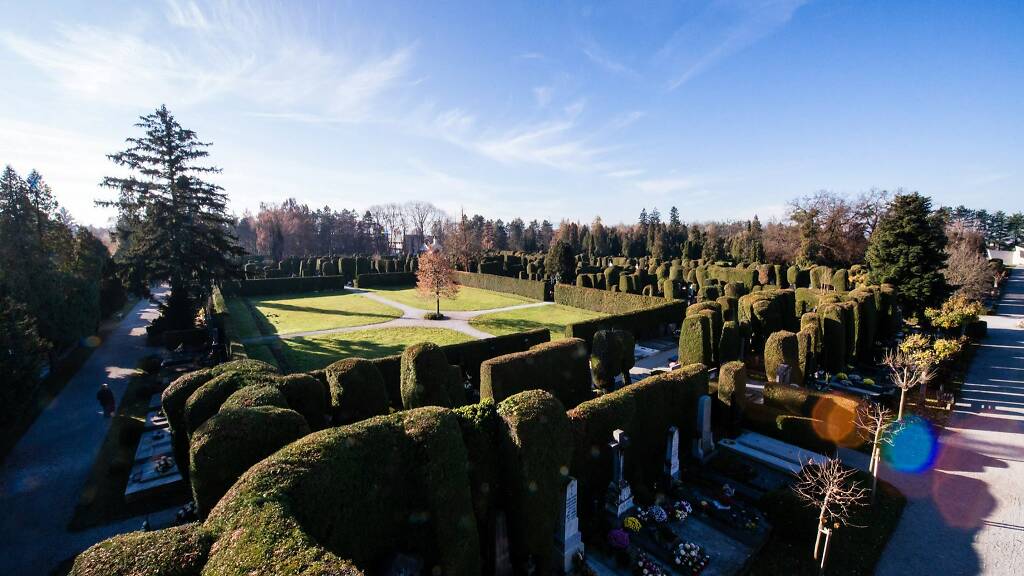 Beautifully landscaped in the early 1900s by Herman Haller, the City of Varazdin cemetery is one of its best gardens. It contains works by internationally recognised Croatian sculptors Antun Augustinčić and Roberto Frangeš-Mihanović. Frangeš-Mihanović is responsible for the very famous statue of King Tomislav which faces the main train station in Zagreb. The Varazdin community orchard will be located in Haller's alley, just behind the cemetery © Parkovi d.d. Varaždin
Beautifully landscaped in the early 1900s by Herman Haller, the City of Varazdin cemetery is one of its best gardens. It contains works by internationally recognised Croatian sculptors Antun Augustinčić and Roberto Frangeš-Mihanović. Frangeš-Mihanović is responsible for the very famous statue of King Tomislav which faces the main train station in Zagreb. The Varazdin community orchard will be located in Haller's alley, just behind the cemetery © Parkovi d.d. Varaždin
A community orchard, sometimes known as a public orchard, is an increasingly popular use of public land in some areas of western Europe and North America. They are an asset shared by a community and not managed for personal or business profit.
A community orchard has many benefits - it increases community access to healthy, organic fruit, it teaches young people about food, organic produce, agriculture and cultivation and it allows ordinary people to develop cultivation skills. This is particularly useful to those who themselves own no land for growing. They also increase co-operation and inter-generational socialising within a community and can be made into focal points for community activities. St Ann's Community orchard in Nottinghamshire, England © Clem Rutter, Rochester, Kent. (www.clemrutter.net)
St Ann's Community orchard in Nottinghamshire, England © Clem Rutter, Rochester, Kent. (www.clemrutter.net)
However, community orchards are not always met with universal approval. Interest in community gardening and cultivation schemes can wane over time, especially if they are started without authorisation. The burden of taking care of such projects then falls on city authorities.
Thankfully, any objections to this brilliant idea in Varazdin have been removed – the Varazdin community orchard will be taken care of by the city's own parks authority. They will decide on which particular fruits and trees are to be planted. Anyone from the community can come and help themselves.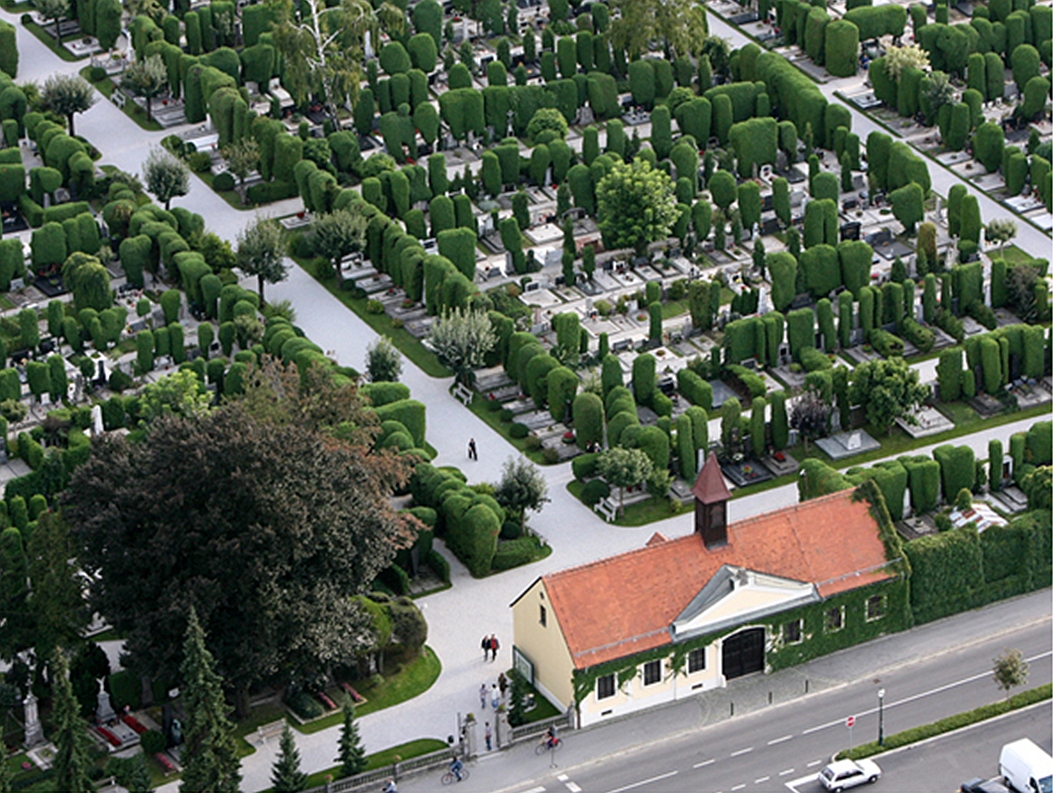 City of Varazdin cemetery, behind which the community orchard will be placed © Turistička zajednica grada Varaždina
City of Varazdin cemetery, behind which the community orchard will be placed © Turistička zajednica grada Varaždina
Low-lying fruit trees and berries are often chosen for community orchards. Their height level means they are not out of reach for youngsters who are being educated in such areas, and harvest is made safer, easier and more accessible to all age ranges.
The community orchard in Varazdin will be arranged in expanding circles. The first planted trees are expected to bear their first fruits within just a few years. Some residents of Croatia might be of the opinion that their communities already have a community orchard. However, taking fruit from a neighbours trees, even if granted permission to do so, is something different to a community orchard, in which access to pick fruit is opened to the general public at any time, not just community members and with no prior agreement necessary. Stealing fruit from your neighbour's trees and bushes is certainly not comparable to a community orchard.
For the latest travel info, bookmark our main travel info article, which is updated daily.
Read the Croatian Travel Update in your language - now available in 24 languages
22 Decanter Medals for Ludbreg and Varazdin Vineyards
October 26, 2020 (Press release) - Decanter 2020. – 22 medals and 11 recommendations for a modern, fresh, low-alcohol wine
Ludbreg and Varaždin vineyards deserve to be on the Croatian wine map
The new premium wine region is located in Varaždin County, the region of modern, fresh, low-alcohol wines. At the 17th Decanter World Wine Awards 2020 in London, the world’s most prestigious wine evaluation, 11 wineries from Varaždin and Ludbreg vineyards creating wines with a lot of passion and love, won as many as 22 medals and 11 recommendations.
Silver and bronze medals were won mostly by family wineries that can cope with the best in the world in terms of quality, which has now been confirmed by the world's most respected experts.
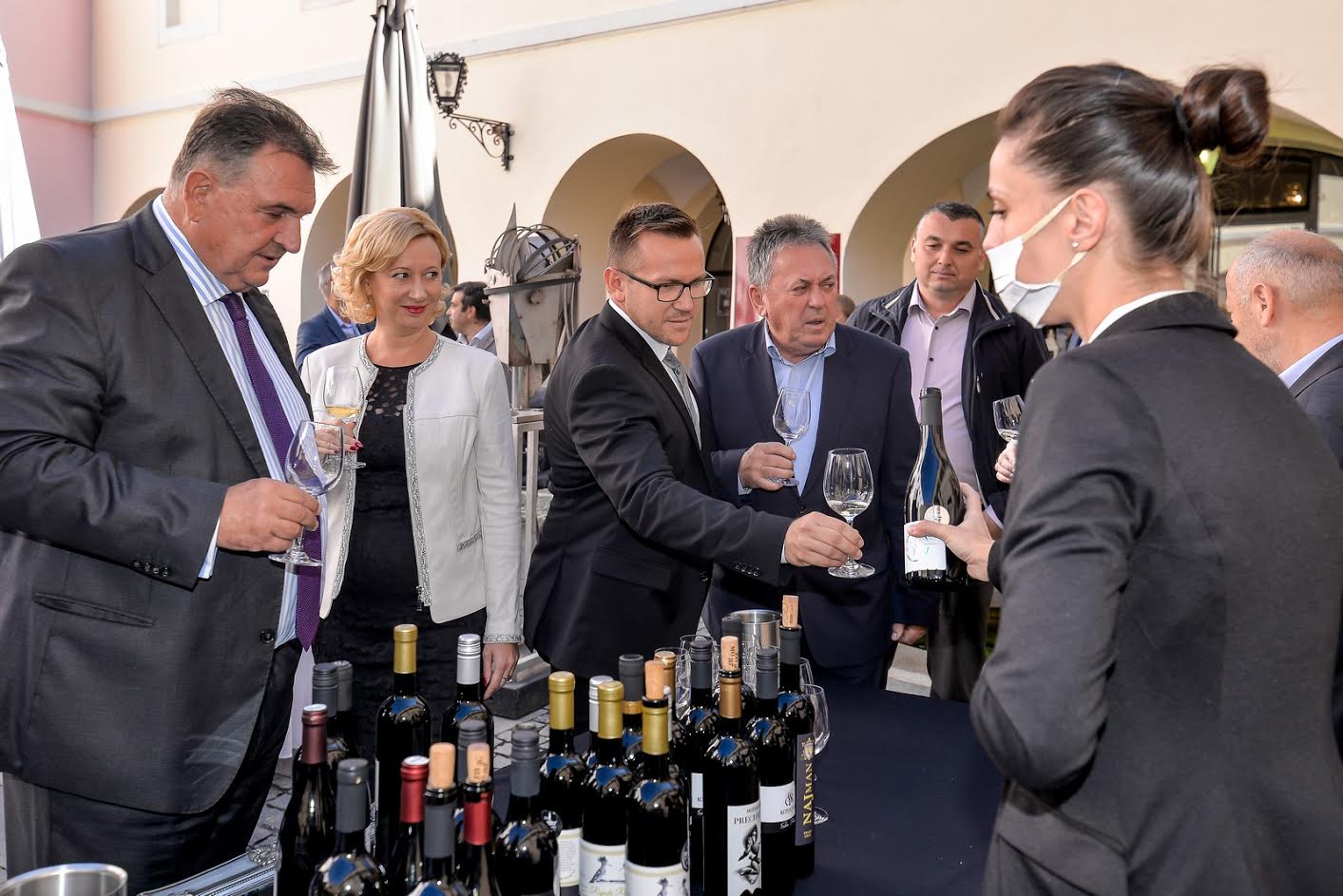
This is a great success, especially if it is known that, with the encouragement and support of Varaždin County, they sent a significant number of wine samples for the first time for a prestigious evaluation in London. More precisely, 35 samples were personally selected by the Croatian sommelier champion and Decanter judge Siniša Lasan.
"After the first 'scan' and conversation with the winemakers, I saw a tremendous potential that is now proven by the results of the most rigorous, but also the highest quality exhibition. This is a big step, but we need to work harder and better to finally seriously include these two vineyards, Varaždin and Ludbreg, on the wine list of Croatia. Results like this will help, and I believe that next year we can reach gold," Lasan pointed out explaining that this year wines were evaluated only by the UK judges, and autochthonous varieties were preferred.
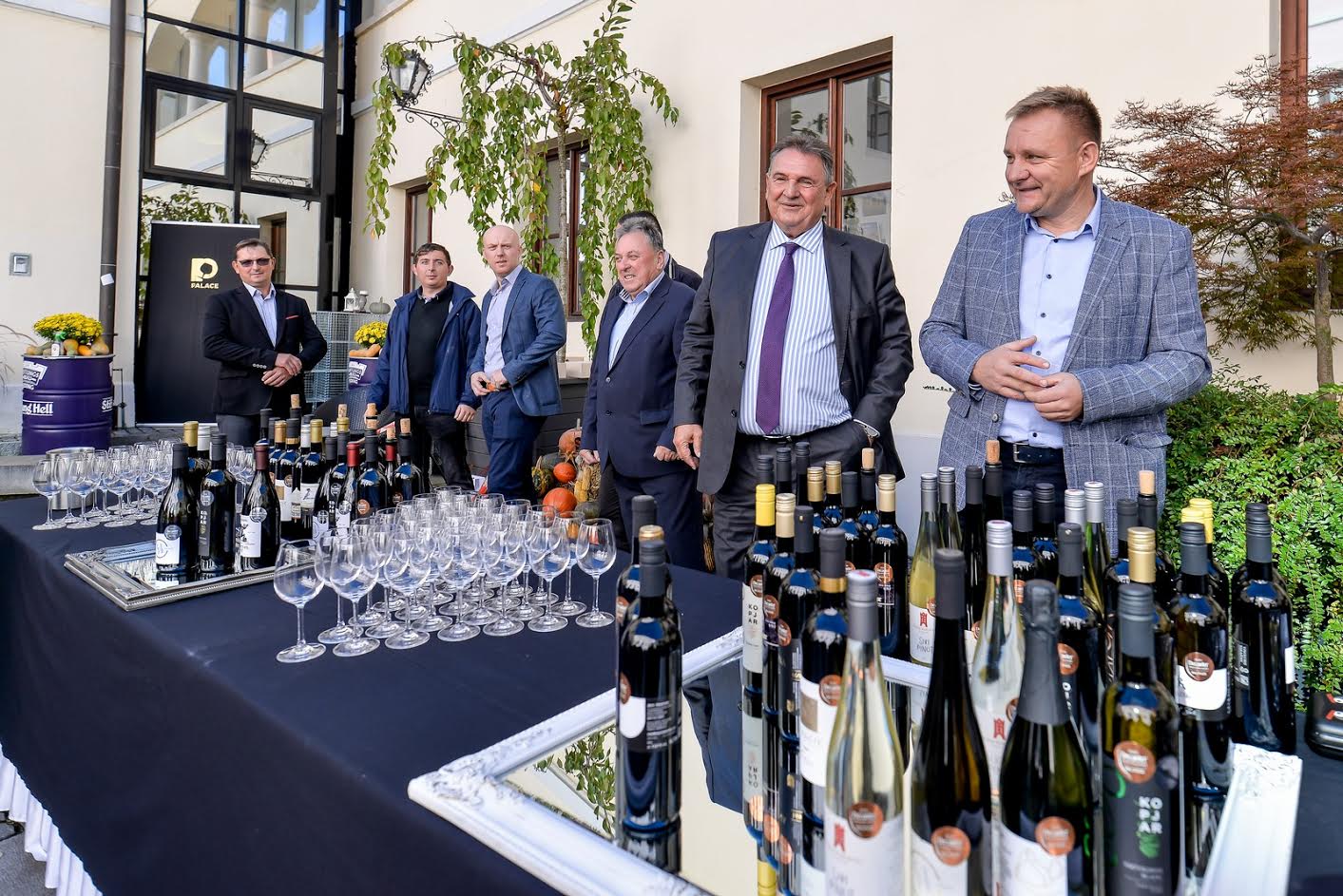
Among the 11 members of the Decanter wine national team of the Varaždin County, the most successful one was Kopjar Winery, winner of one silver (Graševina) and four bronze medals (Sauvignon Blanc, Chardonnay, Muscat Yellow, Rhine Riesling). The judges vividly described their Graševina as a wine "with an intense taste of poached pear with an indication of acacia and tea leaves".
The highest score was given to Košćak Winery for its Sauvignon, which they could not resist even in London.
"Lively and upbeat Sauvignon with fresh green notes and a long finish," the judges described.
Among the winners is also the Kotolenko Wine Temple, for which wine production has been the main source of income for more than half a century.
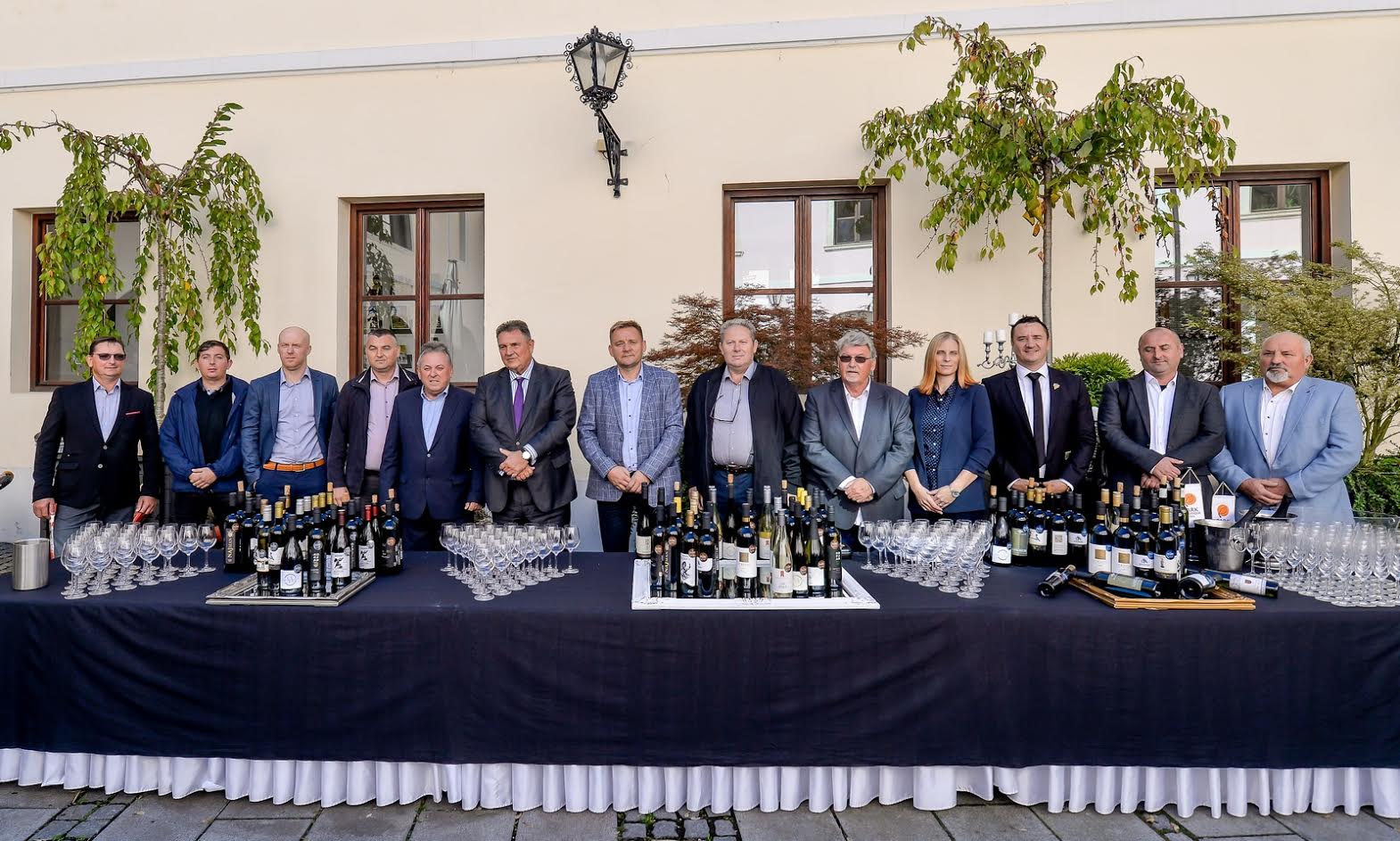
"Look for wine where it is created by human hands," is the motto under which the Kotolenko family creates Pinot Gris, Muscat Yellow, Sauvignon, and other top wines on the fairytale hills of Varaždin County.
"Our goal is to produce a good wine of continuous quality every year. With a lot of work, commitment, love, and knowledge, nothing is impossible. Evaluating at the Decanter is proof that we work well and that we go the right way. It is now our responsibility to be even more committed to quality and to spread the wine story beyond the borders of Varaždin County. Because a day without wine is like a day without sun," concluded Slavko Kotolenko, still under the impression of success in London.
Wines from the Varaždin and Ludbreg vineyards deservedly enjoy the interest of the wine public, which is not surprising, given that Varaždin County is the second most successful in Croatia in terms of the number of medals, awards, and registered samples at Decanter. As many as 35 samples were sent, out of which 22 wines received medals and another 11 wine recommendations. With this, they achieved an incredible, 95 percent success rate at the largest wine competition in the world with more than 16,500 entries from almost 50 countries around the world!
Wine promotion and branding activities continue at an even stronger pace. Awarded wines have a 'Decanter' label as a quality guarantee, a special catalog with a detailed presentation of all awarded wines has been printed, and it is planned to have wine workshops with caterers and distributors throughout Croatia.
All medals of the Wine national team of Varaždin County – Decanter 2020.
Silver medals were won by Košćak Winery for Sauvignon Blanc, Mežnarić Wines for Pinot Noir, Kopjar Winery for Graševina, Najman Winery for Rhine Riesling, and Makar Winery for Graševina.
Bronze was won by Košćak Winery for Rhine Riesling, Mežnarić Wines for Muscat, Kopjar Winery for Sauvignon Blanc, Chardonnay, Muscat Yellow, and Rhine Riesling semi-dry, Najman Winery for Pinot Noir, Makar Winery for Manzoni White, Kežram Winery for Rajn Riesling, Kotolenko Wine Temple for Pinot Gris and Muscat Yellow, Šafran Winery for Graševina and Manzoni White, Lovrini Vineyards for Brut Nature sparkling wine, Stručić Winery for Chardonnay, and Maruševec Castle for Pinot Gris and Pinot Noir.
Recommendations were given to Košćak Winery for Cabernet Franc, Mežnarić Wines for Sauvignon Blanc, Najman Winery for Sauvignon Blanc, Kežman Winery for Muscat Yellow, Kotolenko Wine Temple for Sauvignon Blanc, Šafran Winery for Traminer White, Lovrini Vineyards for Sauvignon Blanc and Rhine Riesling, Stručić Winery for Rhine Riesling and Graševina, and Maruševec Castle for Sauvignon Blanc.
Varazdin Klipic is the 27th Croatian Produce Protected By EU
October 7, 2020 - Varazdin Klipic yesterday became the 27th item of Croatian produce protected by the EU. The bread roll is designated a unique standing and protected name because of its distinct place of origin
Terrific news from the Croatian Ministry of Agriculture! As of Tuesday 6 October 2020, Varazdin Klipic became the 27th item of Croatian produce protected by the EU.
The process of protection of the bread snack's name began in February 2017, when the Chefs Association of Varaždin County submitted a request to the Ministry of Agriculture.
Varazdin Klipic is made according to a specific recipe - its thin dough is stretched, cut into strips and then rolled into 25 cm long sticks. A time-honoured tradition of Varazdin County, the breadsticks must have four folds on each side.
Varazdin Klipic, collected in a basket and pictured in front of the famous Old City of Varazdin © Croatian Ministry of Agriculture
The surface of the Varazdin Klipic is subsequently coated with egg and sprinkled with cumin seeds, which give them a distinct flavour. After baking, their outside is gold in colour with a smooth and firm consistency. Their insides are white, soft and fluffy. Varazdin Klipic is always handmade and the ingredients of its dough are wheat flour, milk, sunflower (or vegetable) oil, yeast, sugar and salt.
Varazdin Klipic is not the only protected product from Varazdin County - Varaždin cabbage is already protected at an EU-level, as is Meso ‘z tiblice from Međimurje.
The other Croatia produce currently protected at an EU-level are Paški sir, Paška janjetina and Paška sol (Pag cheese, Pag lamb and Pag salt), Bjelovarski kvargl cheese, Neretva mandarins, four different and distinct pršut (prosciutto) - from Dalmatia, Drniš, Krk island and Istria, Lička janjetina and Lički krumpir (lamb and potatoes from Lika), olive oils from the islands of Cres, Krk, Solta and Korčula, Poljički soparnik, sour cabbage (sauerkraut) from Ogulin, Kulen from Baranja and Slavonia, Slavonia honey, Međimursko meso ‘z tiblice, Zagorski puran and Zagorski mlinci (turkey and mlinci from Zagorje) and Brački varenik, a spicing made from grape juice which also won its designation recently.
For the latest travel info, bookmark our main travel info article, which is updated daily.
Read the Croatian Travel Update in your language - now available in 24 languages.
Visit Ludbreg on the Croatian Road Less Travelled
July 9, 2020 - Continuing the TCN series, The Croatian Road Less Travelled, Marc Rowlands explains why you should visit Ludbreg.
Situated in the far north of Croatia, just south-east of Varaždin and Čakovec and less than 20 kilometres from the border with Hungary, the small and picturesque town of Ludbreg is one of incredible contrasts and one with no small amount of ambition. Its close proximity to such neighbours pales into insignificance when you see the places Ludbreg would rather be judged against - this town is known as the Centre Of The World. The moniker was attributed when it was discovered, by accident, that it lies equidistant between many significant cities. Capitalising on the name, Ludbreg has charted these cities and their distance in a circular stone paving feature which can be found in the town's central square. 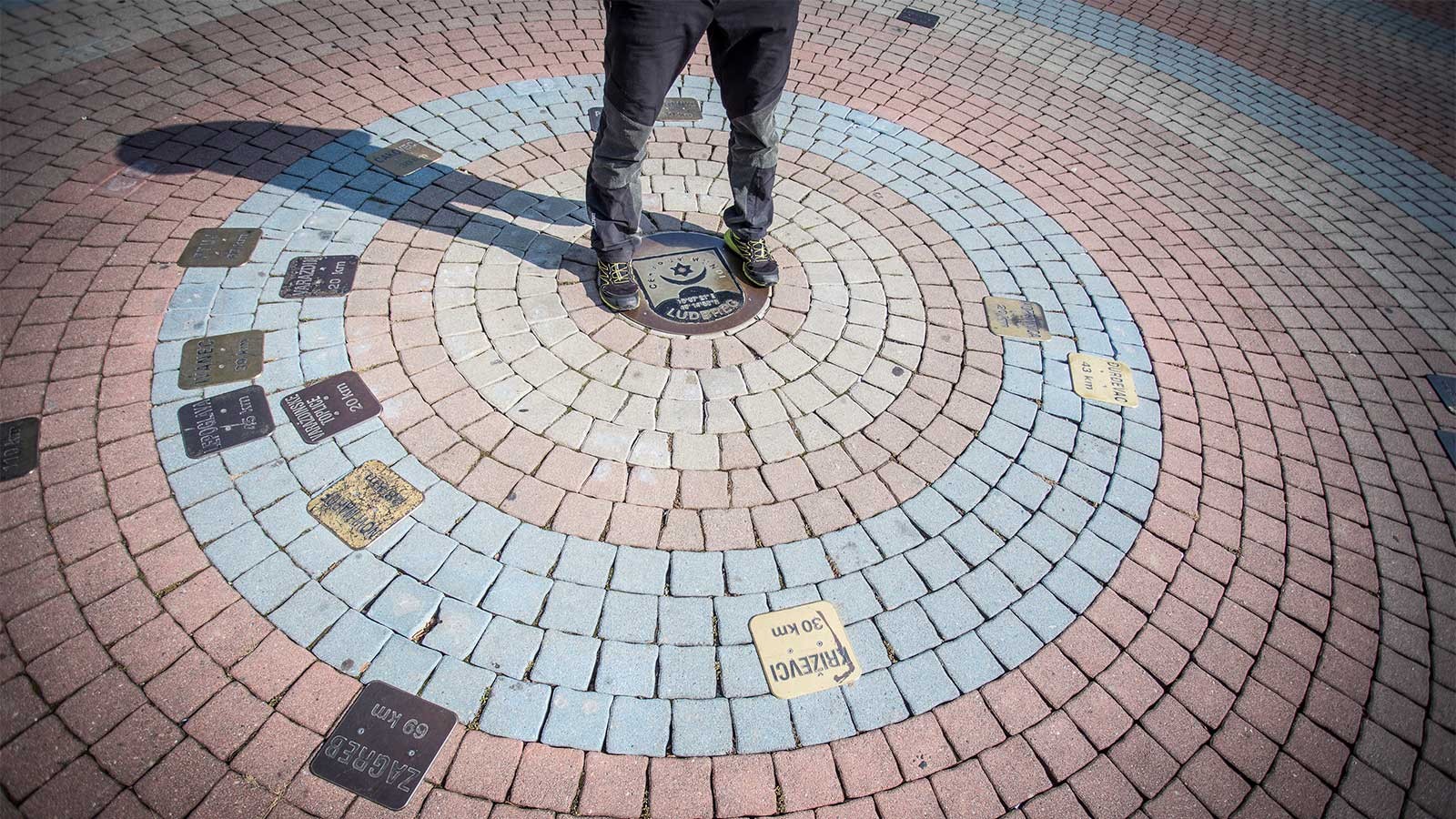
Visit Ludbreg, Centre Of The World © Croatian National Tourist Board / Bojan Markicevic
However, as much as the town might name-check Paris, Athens, Vienna and Budapest on its monument, there's actually no escaping the fact that it is actually a direct product of its local environment. Its close proximity to the river Drava - an important trading route since before Roman times - its major tributary, the river Plitvice, and its placing on the river Bednja, are doubtless the reasons for its position. That it sits on the border of three county lines - Koprivnica-Križevci, Varaždin and Međimurje - might be a modern administrative allocation, but it gives an indication of Ludbreg's mixed identity. 
The best place to chill when you visit Ludbreg is Youth island © Ludbreg Tourist Board
To the town's east lie the vast flatlands of the Pannonian basin, to the south, a luscious green carpet covers the gently rolling hills of Zagorje, along the river Drava is the historic region of Podravina, stemming from the foothills of the Alps, to its north, historic Međimurje, then Austria and Hungary. You can see the land around the town juggle with this mixed identity, just as the town does; flat agricultural fields are interrupted by hills like Kalnički gorje or more gentle rises atop which beautiful holiday homes are placed. Nearer the centre of town, ultra-contemporary businesses lie next to routes of ancient pilgrimage. Neither here nor there, Ludbreg exists within a wonderfully mixed topography, with one foot in the past but a sharp eye on the future. 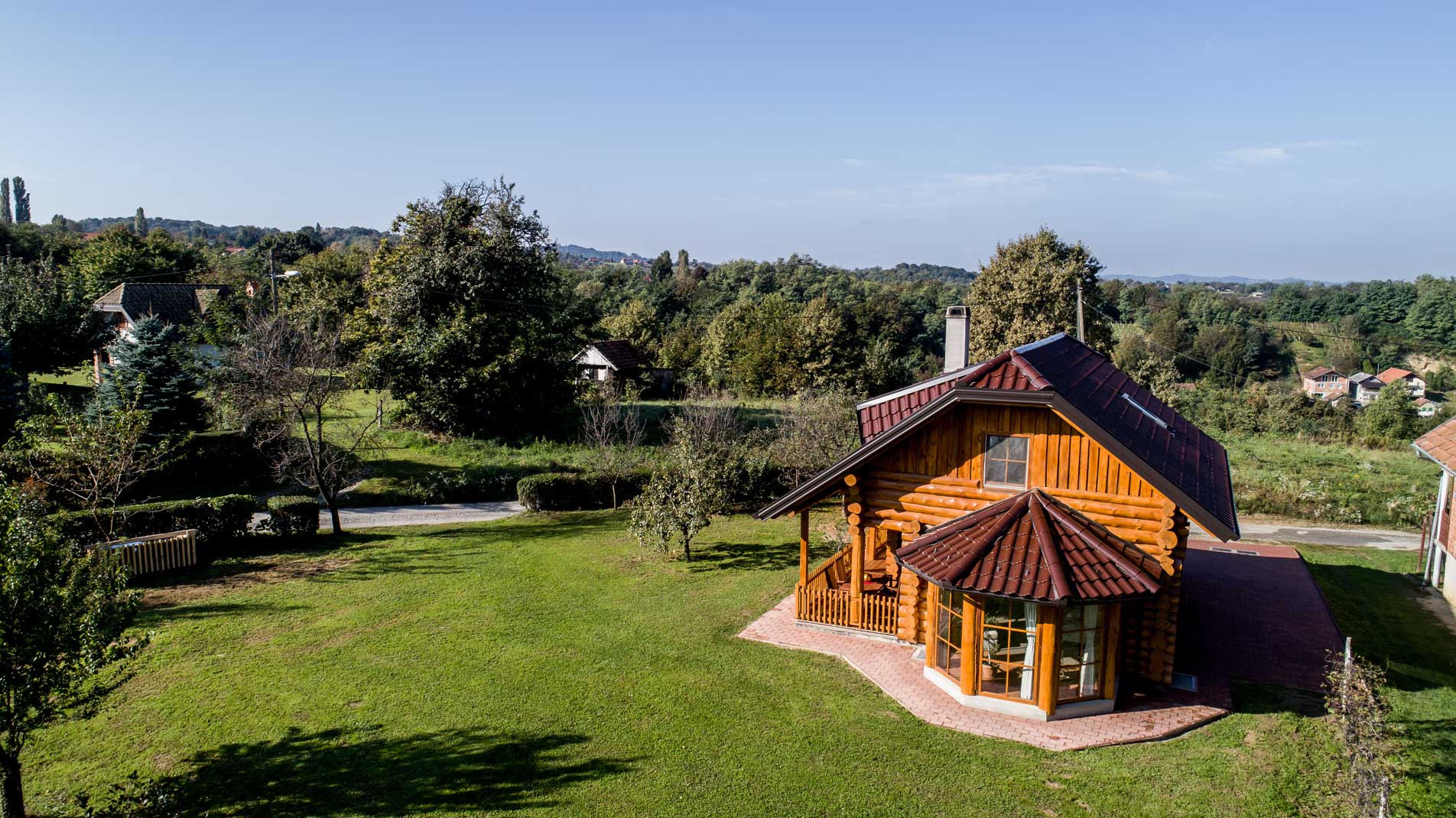
Hazelnut House holiday home, one option of where to stay when you visit Ludbreg © Varaždin Tourist Board
Why visit?
Truth be told, if you visit Ludbreg, you can see all of its sights in a day trip. And the town is perfect for just that. But, by doing so, you probably wouldn't get more than a tourist's glimpse of the place. Ludbreg is actually comprised of thirteen settlements that exist around the centre and it is within these quiet-looking hamlets and villages that most of the town's drive and ambition lie. This is where the people live. And, for a while, you can too. The whole town has a reputation for sustainable living and sustainable growth - pioneering waste management schemes, growing allotments granted to residents without gardens and technically advanced green power solutions. It is in these settlements that you'll find holiday homes designated to agro-tourism and ecotourism. Perfect for relaxing alongside only your nearest and dearest, they hold distinct, unique architecture, some have outdoor swimming pools and all are surrounded by clean, fresh air and nature. 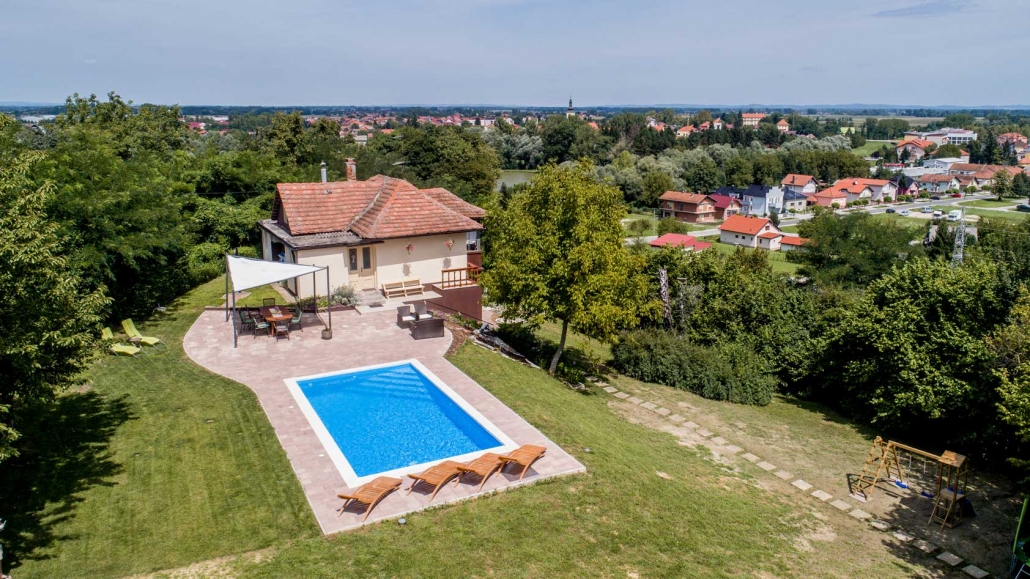
Villa Mila holiday home, another great place to stay when you visit Ludbreg © Varaždin Tourist Board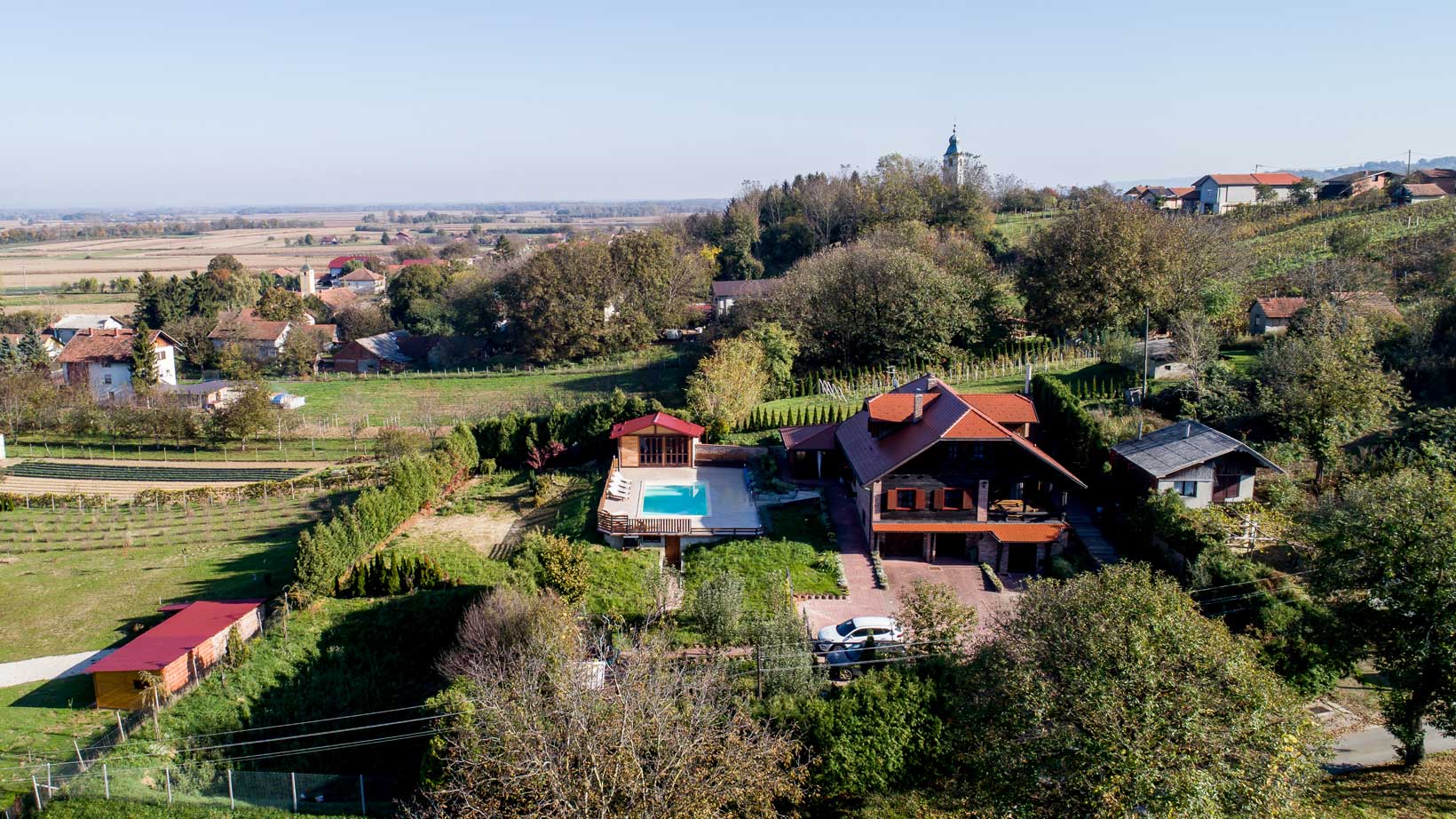
Rural House Gabrijela holiday home - you can get close up to nature and still keep the swimming pool when you visit Ludbreg © Varaždin Tourist Board
The bountiful nature surrounding Ludbreg is one which services the town's ancient industries, traditions and arts & crafts. Some of these you can see or join in with, the most famous being Ludbreg's wine roads. Take a tour of the area's vineyards, cellars and winemakers to sample great examples of continental wine. White wines are their forté and Graševina, Riesling, Pinot Blanc, Pinot Gris, Sauvignon, Chardonnay and Traminac are just some of the major league players available here, alongside rarer names like Moslavac and Manzoni. Muscat, Pinot Noir, Frankovka, Cabernet Sauvignon and Poštenjak can also be sampled.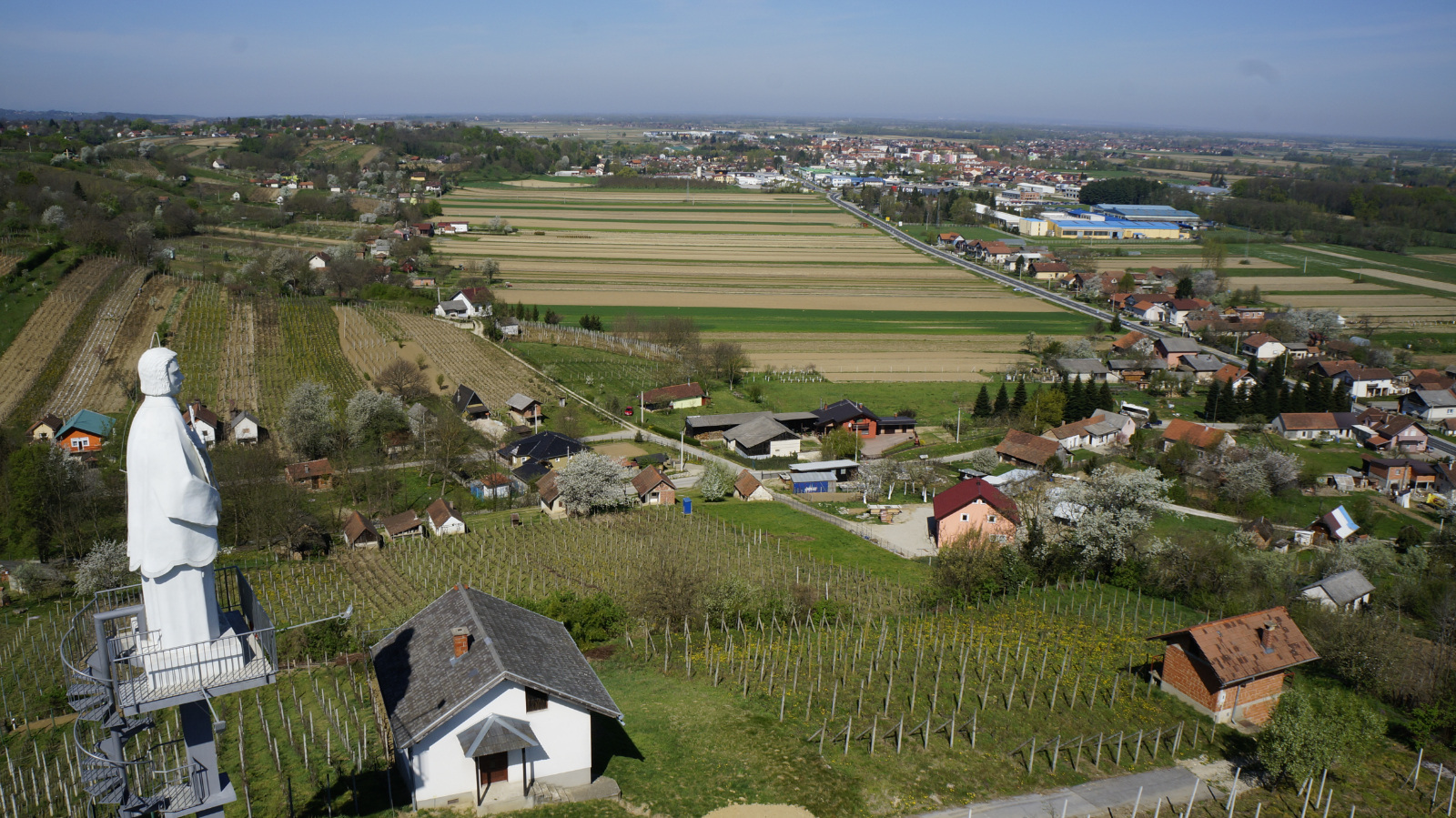
The wine roads surrounding the town are one of the best activities when you visit Ludbreg © Ludbreg Town
Alongside the sights, the other thing to catch when you visit Ludbreg is the events. In these regards, Ludbreg punches well above its welterweight. The town's event calendar is brimming with exciting or entertaining things to see and do. It wasn't so long ago that hundreds of participants and spectators from 33 countries descended on the town for the annual World Model Aircraft Championships. Ludbreg is used to happily hosting such hordes, its institutions beckoning thousands of visitors every year.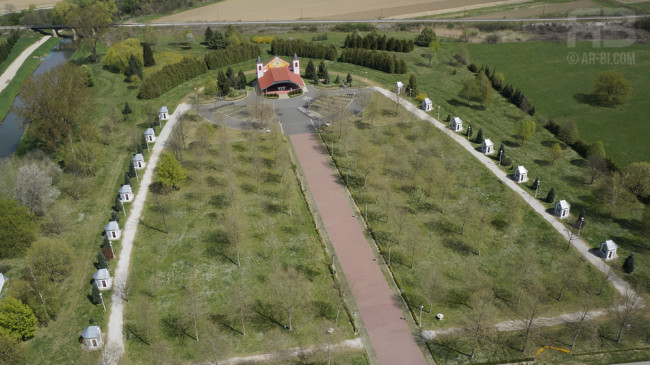
The peaceful approach to the pilgrimage site - one of the more famous reasons to visit Ludbreg © Ludbreg Tourist Board
The most famous of these institutions is the Catholic faith. Whether you believe the town to be named after a returning Crusader or an entranced winemaker, one history of Ludbreg holds a greater clarity due to its acknowledgement by the Vatican. Many people visit Ludbreg on devout pilgrimage because the Blood of Christ is said to exist here. When doubt entered into the mind of a local priest performing the Eucharist, it is said the vessel he held became filled with the actual Blood of Jesus Christ. Pope Julius II began investigating the claim thoroughly, so much so, that the miracle wasn't confirmed until the reign of his successor, Pope Leon X, in 1513. Pilgrims have visited Ludbreg ever since. The relic of the Precious Blood of Jesus is kept in Ludbreg's parish church of the Holy Trinity, although a special site for pilgrims was built on the edge of the town centre in 1992.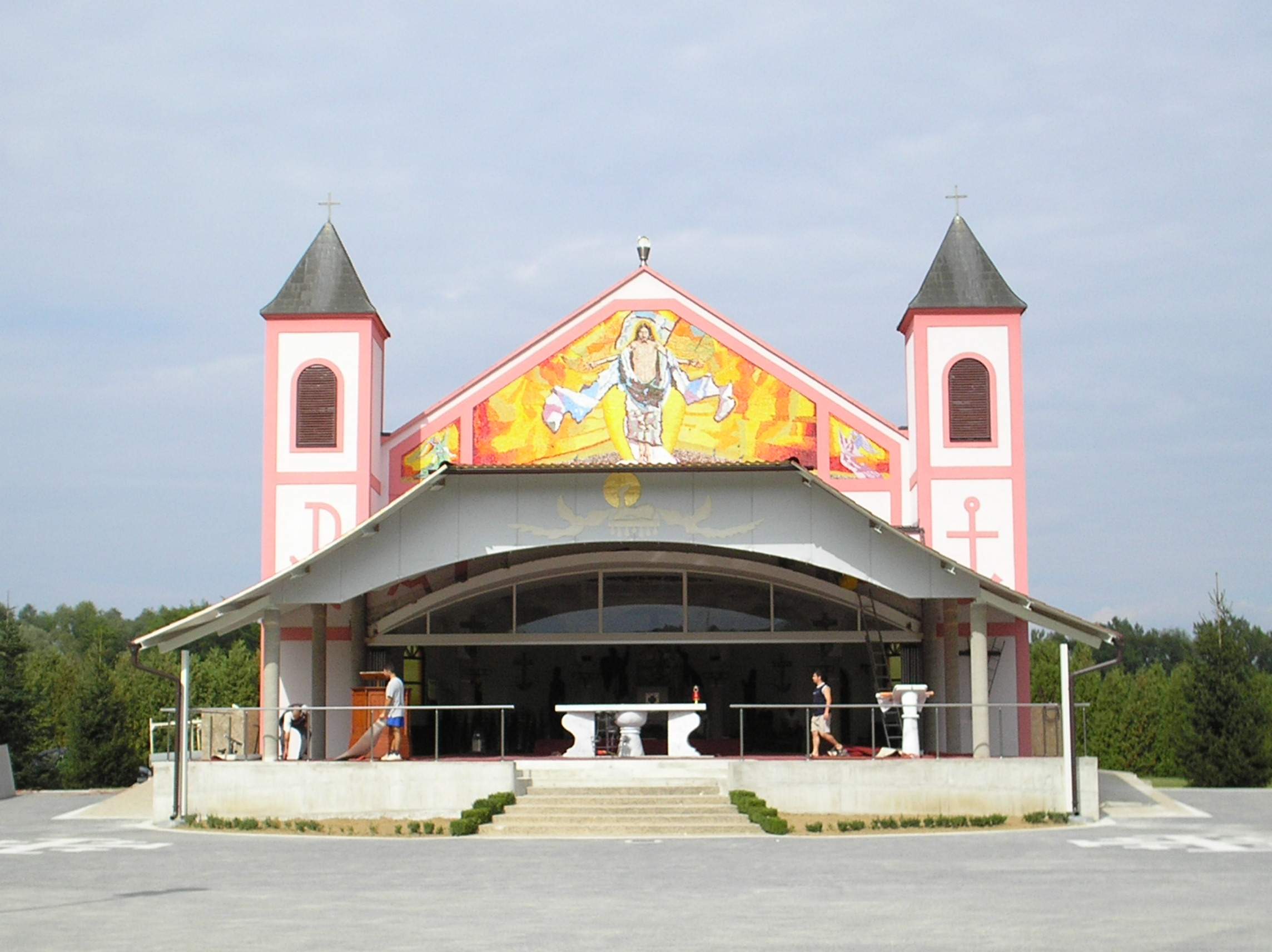
The pilgrimage site which the faithful flock to when they visit Ludbreg © Fraxinus
The most-famous architectural building in Ludbreg (and the prettiest) is the Baroque castle Batthyany. The castle dates from the reconstruction of the older medieval castle on the same site by Count Louis of Batthyany in the mid-18th century and today houses the workshop of the Croatian Restoration Institute. There, painstaking repair work is undertaken on historical items from all over Croatia which have been damaged by the years or in the war of the 1990s. Walking around the ultra-modern town centre of Ludbreg offers no clue that behind this castle's walls such careful preservation of the past is taking place.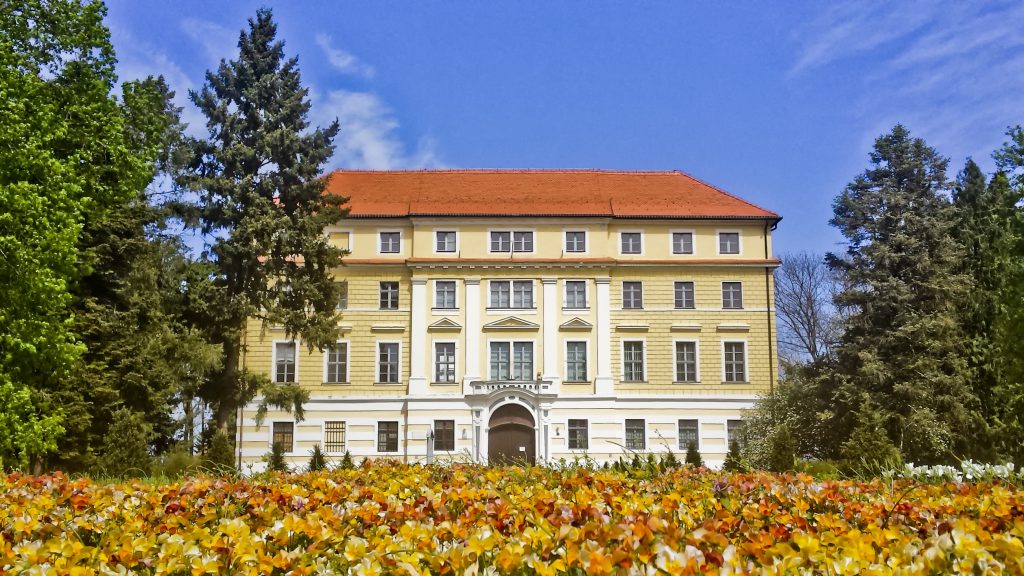
Batthyany castle in Ludbreg © Ludbreg Town
The other great institution of Ludbreg is also one which dedicates its life to preserving the past, but the history it protects belongs to the people, not the church. The cultural and artistic society KUD Anka Ošpuh, named after a female Partizan hero, has been operating in Ludbreg since 1976, although its roots are older. Many female-led charitable organisations operate in and around Ludbreg. That much of this work has existed in such hands for up to 150 years is simply remarkable, particularly within a broader Croatian society still viewed as patriarchal. Traditionally, while the young men of Ludbreg were drawn to more manly pursuits such as sports, bombastic brass instrument-playing and all-male choirs rooted in those of the church, the town's women were instead occupied with chores, charity work and the songs, dances and costumes of folklore. Folklore societies and their preservation of local, peasant traditions became incredibly popular all over Croatia after the Second World War. Early examples in the area of Ludbreg include Braća Kavurić from Martijanec (founded 1945) and that of Kutnjak (1947) with similar established in Sveti Đurđ, Sesvete Ludbreški, Dubovica and Vrbanovac. 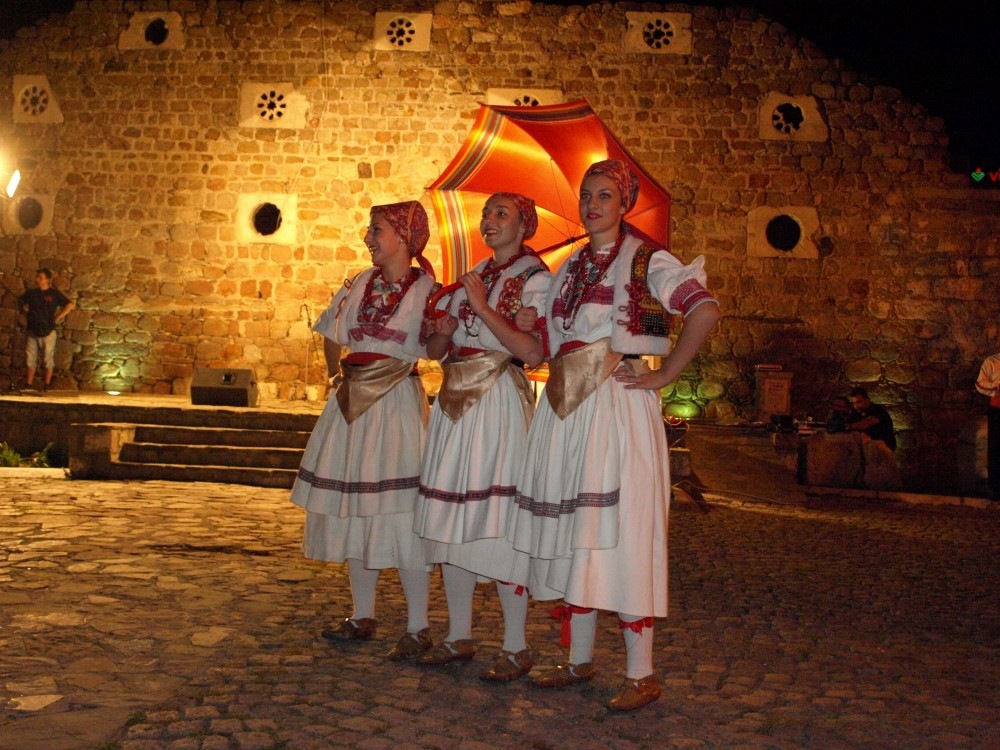
Contemporary members of folklore society Anka Ošpuh © Ludbreg Town
These village societies were mixed, but with the absence of any such society in central Ludbreg, it took 22 women to form the town's own. They made a great success of doing so. Although initially so poor with resources they had to practise in the basement of factories and local houses, by 1977 the society had grown to contain 79 members and was able to establish its own group of attached tamburica musicians and an all-female choir. As their reputation grew, the society absorbed many key contributors from similar groups in surrounding villages and their assets. To the 12 valuable Moslavina folk costumes with which they began, KUD Anka Ošpuh were able to add examples from Podravina, Slavonia, Dalmatia, Lika and even some worn by Croats in Vojvodina (present-day Serbia). Many of these costumes are still preserved or worn by society members to this day, kept alive, like the songs and dances of the region, by the society. These days, KUD Anka Ošpuh is one of the most highly regarded in Croatia and has performed all over the country, plus internationally at folk song and dance festivals. Its essential work is passed down to children and young people of the area in order that these traditions survive. Highly skilled and beautifully presented, they offer a glimpse of authentic and historic local culture. If you get the chance to see them, you simply must.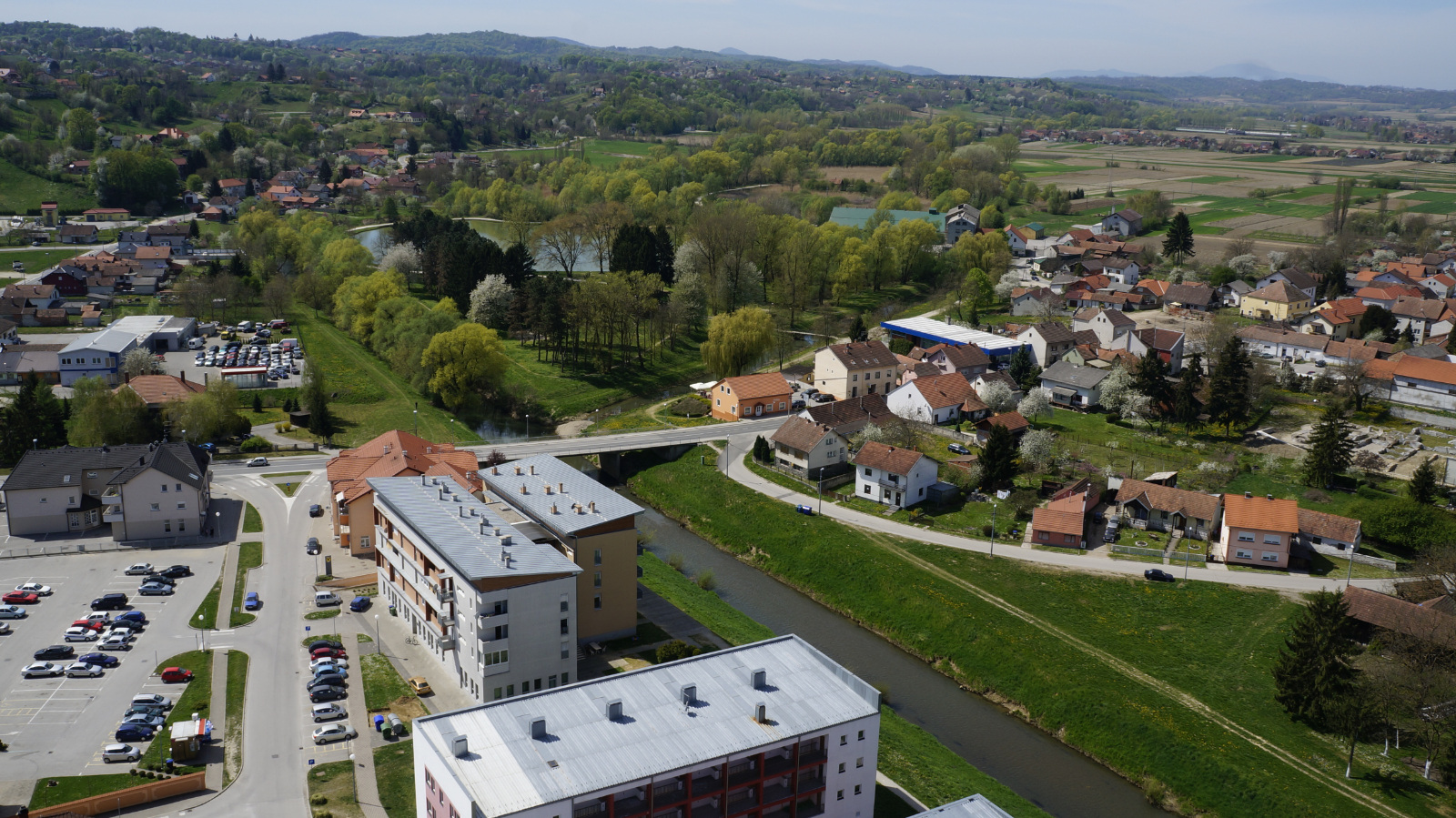
Ludbreg © Ludbreg Town
How to get to Ludbreg: The town lies approximately 100 kilometres by road from Zagreb, with bus or car being your options. Ludbreg has its own train station with trains running direct to Zagreb, Osijek and Varaždin.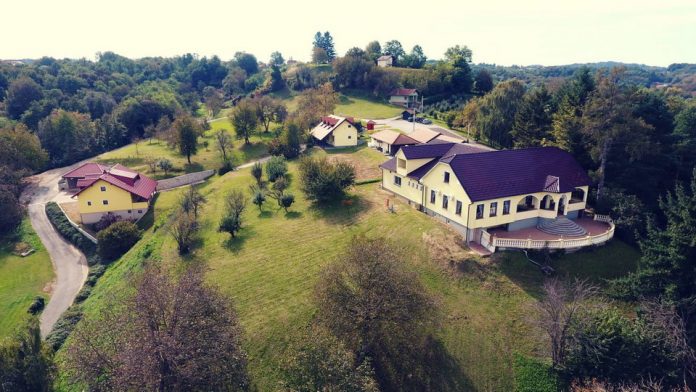
Črn-Bel restaurant © Črn-Bel restaurant / Luka Krušec (LuMedia)
Where to eat: Surrounded by vineyards and beautiful nature, the Črn-Bel restaurant is a brilliant spot for lunch or dinner. They do great grilled meats, superior pizzas from a wood-fired oven and sharing platters, with most ingredients sourced locally. Restoran Raj in the town centre is much more of an informal, family place, with pizzas for the kids and shared grills or deep-fried seafood for the parents.
Where to drink: Pivnica Mejaši is a great pub in the centre of town where you can refresh yourself. They have a lovely, covered outdoor terrace and a good pub-grub menu, including pizzas, which will satisfy for lunch or an informal evening meal.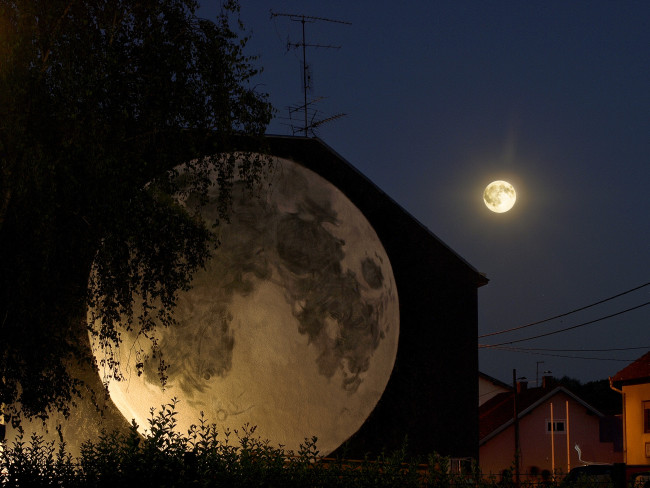
Ludbreg's first piece of street art is a mural of the moon © Ludbreg Tourist Board
What's new: Although the 'Centre of the World' is the star of the town's main square, you'll not miss several new additions to their menu of monuments. The latest is an artwork dedicated to young, local athlete Sara Kolak, a javelin player who earned a Gold medal for Croatia at the 2016 Olympics. She shares the square with a fountain, a photo opportunity spot and a remarkable solar-powered tree where you can charge your phones and other devices for free. For the cool cats, the town has a brilliant mural of the moon on one building facade – it's Ludbreg's first street art piece. The town will host a conference on cycling tourism from 16 – 18 September 2020.
Ludbreg's town centre © Ludbreg Town
What not to miss: For a small place, the list is huge. Don't miss the parish church of the Holy Trinity, its interior is delightful. You must visit the castle too and take the pilgrim's walk up to the modern ecclesiastical point of worship. LUMEN, a Ludbreg youth organisation, hold great music and theatre events. Centre of the World Day is April 1 and everyone joins in during the town's big day. The fountain on the central square flows with wine for the occasion. The town's carnival sees joyful residents march the chilly streets in costume. It's 164 years old and takes place on Shrove Tuesday. Ludbreg's Advent festivities grow year upon year. Also in winter, at the end of January, the town's winemakers present their fresh batches at the Young Wine Days.
Ludbreg's central square. During its three-day International Flower Festival, the town explodes with even more natural colour © Ludbreg Tourist Board
The town's three-day International Flower Festival is the second biggest in Croatia and is an explosion of natural colour. You can visit it at the end of April / beginning of May. The Ludbreg Bike Tour is a 15 kilometre run around the town, with a great afterparty at the picturesque Youth Island (main picture). Two more great parties are Idemo Otok in June and Crazy Island in August. Strange to imagine such a small place hosting two electronic music festivals of such far-reaching repute, but it does. Young dance music enthusiasts from all over Croatia travel here to attend them. Again, they take place on Youth Island. Although pilgrims visit throughout the year, many reserve the journey for the seven days surrounding Holy Sunday. KUD Anka Ošpuh holds folklore events throughout the year including a memorial performance for former president Mirjana Bošnjak, a springtime celebration, Ludance (which focusses specifically on local folklore), a wintertime celebration, Christmas show and, pick of the bunch, Folklore Meetings in the Centre of the World, during which they're joined by outside folklore societies. KUD Anka Ošpuh's great tamburica orchestra also play many dates independently, as do the once-attached but now independent, all-female Podravina choir.
What to buy: Ludbreg has had a beekeeping society for over 70 years and local beekeepers know their stuff. Ludbreg honey is a great gift to take home, as are any of the bottles of fine wine produced around the town.
Ludbreg's town centre © Ludbreg Town
On these links you can read about the other destinations in our The Croatian Road Less Travelled series:
Osijek - the capital of Slavonia, on the banks of the Drava
Donji Miholjac - a hidden gem in the heart of the Pannonian basin
For the latest news from Ludbreg, check out the dedicated TCN section.
For the latest travel info, bookmark our main travel info article, which is updated daily.
Read the Croatian Travel Update in your language - now available in 24 languages
Radimir Čačić Re-Elected Alps-Adriatic Alliance Chair
ZAGREB, November 21, 2019 - Varaždin County prefect Radimir Čačić will again head the Alps-Adriatic Alliance (AAA) over the next two years, the Alps-Adriatic-Council decided in Varaždin on Thursday.
Čačić was elected Council chairman in Klagenfurt in 2017 as the first prefect from Croatia.
The emphasis in the next term will be to have big joint projects, not just small ones, financed from European Union funds, he said, adding that Varaždin County had also founded the Alps-Adriatic Association as an operational core to which all member states were invited.
AAA secretary-general Thomas Pseiner said he and his Steering Committee had approved 66 projects over the past two years, mainly for culture, but also for cross-border defence from natural disasters.
Čačić said there was interest for the northern Serbian province of Vojvodina to join the AAA.
The AAA has been active 41 years and comprises the Austrian regions Burgenland, Carinthia, and Styria, the Croatian counties Istria, Karlovac, Krapina-Zagorje, Koprivnica-Križevci, Međimurje, Primorje-Gorski Kotar and Varaždin, the Association of Cities and Towns of Slovenia, and the Hungarian county Vas.
More Varaždin news can be found in the Lifestyle section.
Varazdin County First in Croatia to Give Train Passengers Free Bicycle Transport
October 29, 2019 - Varazdin County moves to a more sustainable transport model by offering train passengers free bicycle transport.
HRTurizam writes that at the railway station in Varazdin, the chairwoman of the Varazdin County Tourist Board, Natalija Martincevic, and the director of the Varazdin County Tourist Board, Miran Bojanic Morandini, presented a unique project - free bicycle transport on trains.
“The County of Varazdin, in cooperation with HZ Passenger Transport, is the first in Croatia to launch the free bicycle transport project for train passengers. Citizens thus also acquire the right to free bicycle transport on trains operating in Varazdin County by purchasing a passenger ticket,” said Martincevic.
By combining bicycle and train transportation, tourists visiting Varazdin County, as well as locals, get even more travel options, resulting in a better and more meaningful offer. Better accessibility of the beauty of the County, as well as convenience in carrying out daily tasks, result in increasing the quality of life, stronger development of a new tourist offer, but also a more sustainable transport system.
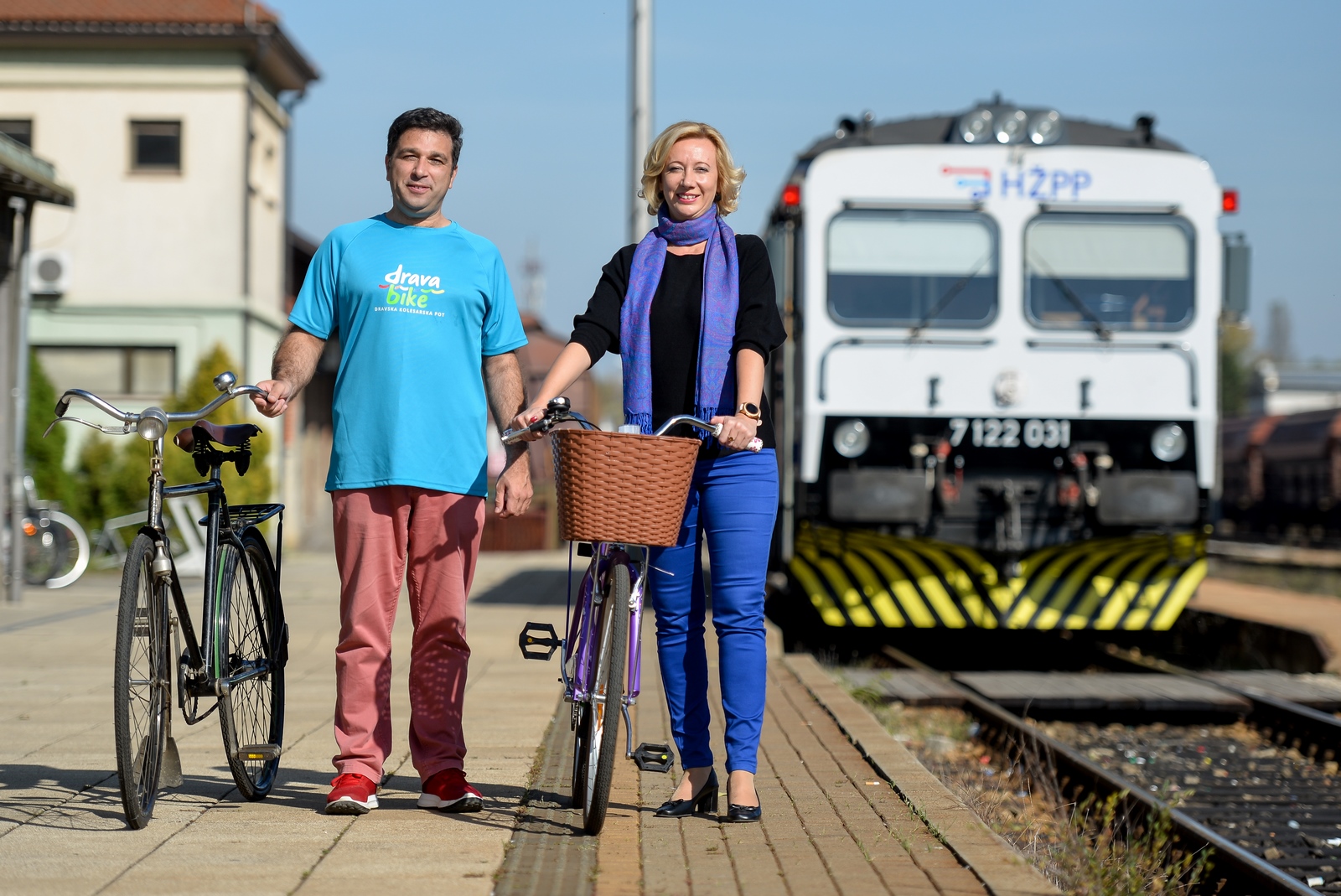
TZ Varazdin County
“Varazdin is currently the last point on one of the most beautiful and longest cycling routes from the source to the mouth of the Drava. More than 200,000 bicycles pass through this route and many of them use integrated transport, which allows for a much wider radius of travel. This is important news for both tourists and locals alike,” said Miran Bojanic Morandini, director of the Varazdin County Tourist Board.
This is just one of the many measures that Varazdin County is implementing in order to achieve traffic sustainability. Some of the other goals are to increase bicycle transport, as well as the share of rail passenger transport. This opens up new possibilities for sustainable travel for its citizens and tourists, which significantly contributes to the reduction of pollution, but also traffic safety.
“In the two years of our mandate, we have provided more than HRK 1,700,000.00 for the development of cycling tourism and cycling routes in Varazdin County. Varazdin County is one of the three Counties in Croatia to introduce the Cyclist Welcome Quality standard, and as many as 30 accommodations and catering facilities in Varazdin County have become part of it,” concluded Natalija Martincevic, chairwoman of the Varazdin County Tourist Board.
To read more about travel in Croatia, follow TCN’s dedicated page.
14 Million Kuna from EU for Varaždin General Hospital
Good news for Varaždin thanks to EU cash.
Varaždin County Gets 855 Million Kuna Investment
ZAGREB, May 21, 2018 - Works on the extension and repair of the existing drainage system in Varaždin, which is as part of the Varaždin Agglomeration project, worth more than 855 million kuna, began on Monday on the outskirts of this northern Croatian city.
Big Infrastructure Project On Cards For Varaždin
A renovation is on the cards for one Northern Croatian gem!
Varaždin County Cyclotourism off to a Great Start, Looking to Expand
The town of Varaždin is connected to the west with the town of Maribor in Slovenia by the EuroVelo9 cycling route, and to the east with eastern Croatia by the EuroVelo13


